In the last post I wrote in this series about landscape and creativity, one of the things I mentioned was how we can use our creativity as a way of exploring and expressing our connections with the landscape.
One way is to use plant material found in the landscape as a natural dye.
Using natural dyes has been on my list of things to try for ages. As part of my textiles course, I dyed some tiny bits of fabric with nettles, and I’ve dyed cheesecloth using turmeric.
Obviously turmeric doesn’t grow near me! But nettles do. And conveniently, as well as stinging my exposed ankles on overgrown footpaths, they rather like my garden.
When I dyed with nettles last time, I loved the colour that it made. It was a soft, greeny-grey. This time, I wanted to try it again, but with a bigger piece of fabric that I could use to make something to wear.
As I said, I have nettles in my garden. Part of that is because I am bad at gardening, but I also deliberately keep a patch of nettle behind the shed, because they are good for wildlife. Caterpillars in particular like them. However I don’t really want nettles everywhere, so I was able to take care of some weeding and make nettle dye at the same time.
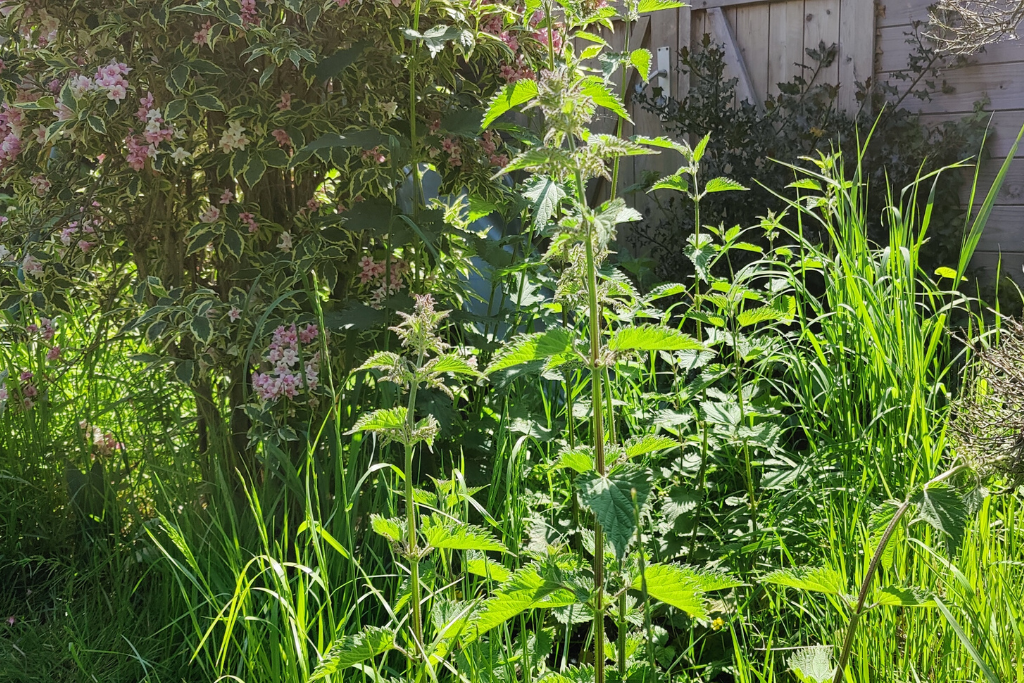
Mordanting Your Fabric
The way dyes work is that they bond with proteins, and that’s how the colour sticks.
Any material that comes from an animal will have protein in it already, and that is true for fibres as well as meat, eggs and dairy products.
Fibres that come from animals don’t need mordanting as they already contain protein.
Fibres that have come from plants, like cotton, do not contain protein so they need to be pre treated so that the dye will work.
This often involves using metal salts, which can be toxic. I prefer to avoid bringing toxic substances into my home, and it wouldn’t sit comfortably with what I want to say about landscape and our place in it if I was to dollop a bucket of toxic metal salts down the drain or onto the ground when I’d finished with them.
Thankfully there are other ways to pre treat fabric.
One way is to use soya milk. Technically it’s not a mordant, because it doesn’t work in the same way as metal salts, but it does the same job, in that it enables the dye to stick to the fibres.
It’s possible to make soya milk for pre treating fabric yourself using soya beans. It’s a lengthy process, so I used soya milk I bought from the supermarket.
Pretreating fabric with soya milk
The ratio for soya milk to water is 1:5. So if you use a litre of soya milk, you’ll need 5 litres of water. I found this was enough to soak 3 metres of cotton fabric.
Leave the fabric to soak for 12 hours. Overnight is easiest.
Hang it out to dry. Unless it’s a really hot day, after squeezing most of the liquid out, you might want to throw it in the washing machine for a spin.
Leave it to cure for a week or so.
Dyeing With Nettles
Before You Start
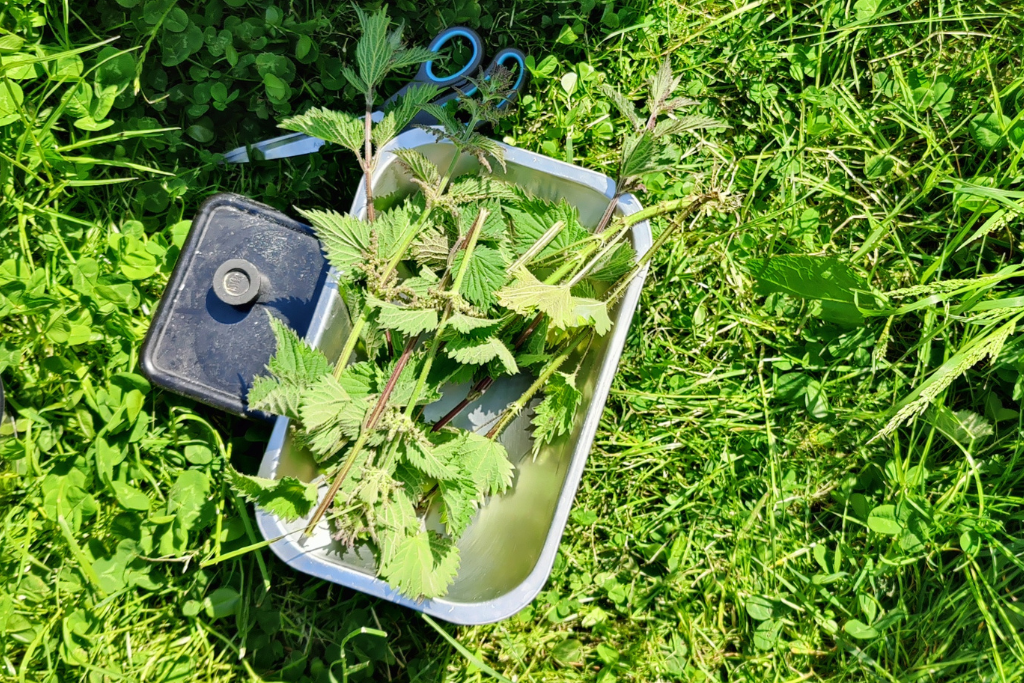
Identify a patch of nettles. Being a bad gardener has its advantages! If your garden is like mine, you might have some just s few steps from your back door.
If you need to forage for them, remember to only take a few from each patch. Leaves and stems can be used.
Weigh your fabric. You will need roughly the same weight of plant material as your fabric. So 500g of fabric will need 500g of nettles.
Wear gloves! Ideally gardening gloves. Nobody wants nettle rash.
Find a large pot. It is always advised to use separate pots for dyeing, and not to use ones you would normally use for cooking. A charity shop or a junk shop might be a good place to look if you don’t have one.
Making the Nettle Dye
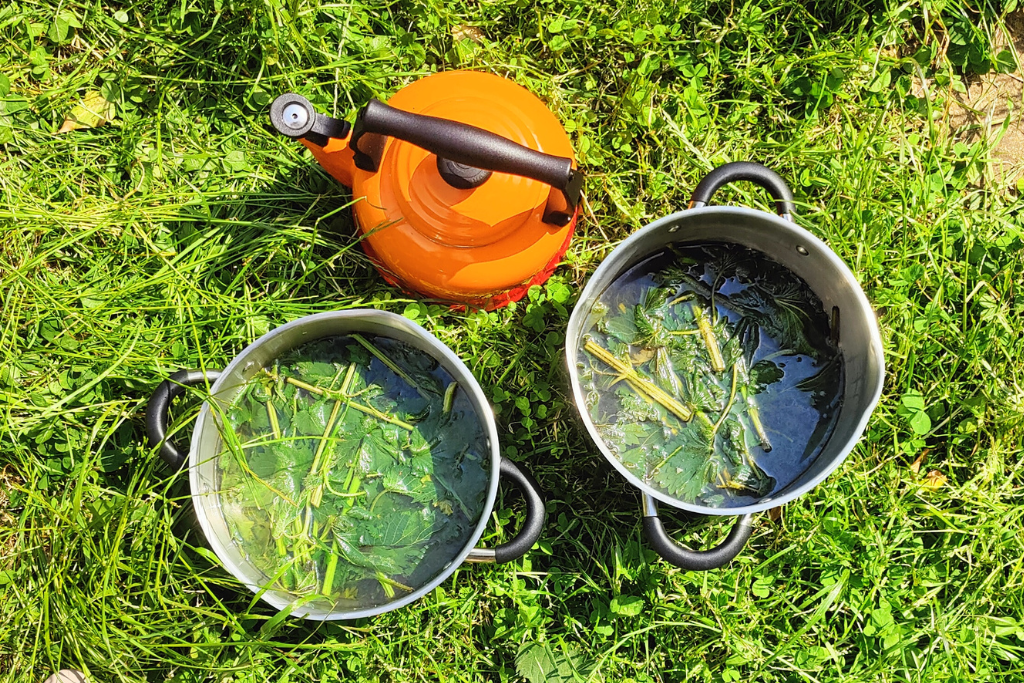
Once you have your nettles, cut them up and pop them in a pot.
Add enough boiling water to cover the nettles. Leave it to sit overnight.
The next day, bring it to the boil and let it simmer for an hour or so. Let it cool, then leave it overnight again.
Strain the liquid. The nettles can go into the compost bin.
Using Your Nettle Dye
Pop your pre treated fabric or yarn into your nettle dye. The fabric needs to be fully submerged. If it’s not, top the dye up with cold water. Bring the pot with the dye and the fabric in it almost to a boil, then let it simmer for an hour or so. Leave the fabric in the dye over night.
If you have time, you could hang the fabric out to dry and leave it for a couple of days before rinsing. Otherwise, rinse it in the sink until the water runs clear. I left mine to dry first, because I know how much harder stains are to get out of things if they dry out!
One of the things I’m finding out is that there is no one way of doing things. Even if you use the same method each time, there’s a good chance you’ll get different colours depending on the plants you used and the time of year.
The worst thing that can happen is that your fabric turns out too light in colour, and you’d prefer it a bit darker. If that happens, pop it back in the dye bath and repeat the process again.
The Results
This is where I’ve got to with mine. It’s far from perfect! It hasn’t dyed evenly and the colour is lighter than I would like. Part of the problem could be that the pot I used was too small for the amount of fabric.
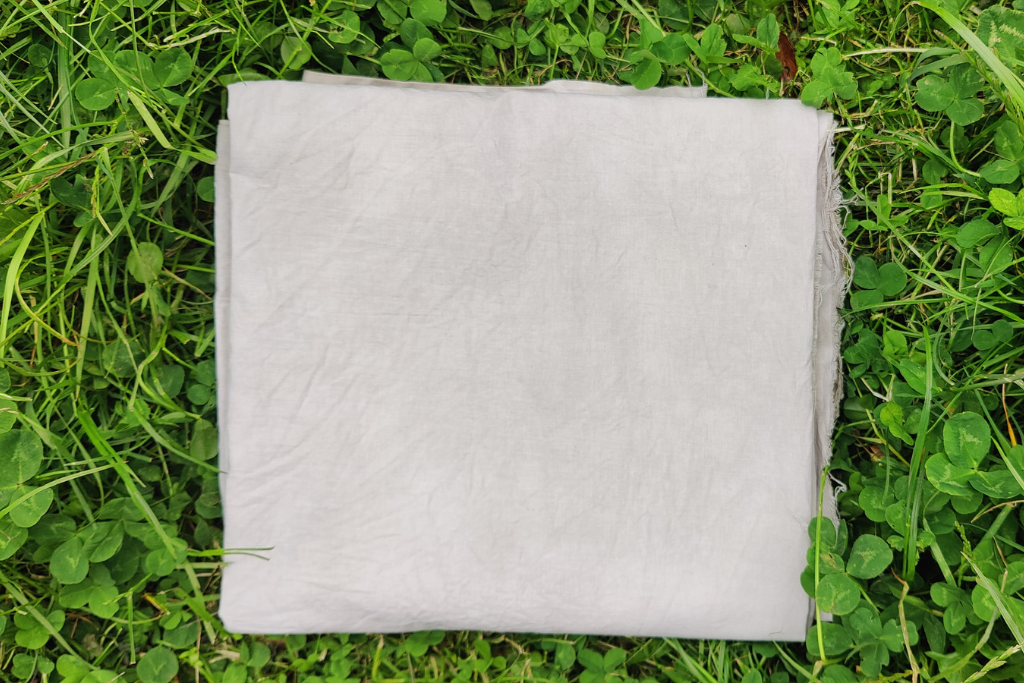
So what I’m going to do is cut out the skirt pieces then pop them back in the dye for a couple of days. That should make it darker, but it probably won’t fix the blotchiness.
But you know what? Even if the colour is not as deep as I’d like, or if it’s still blotchy, I’m going to use it anyway. There’s beauty in things that aren’t perfect, and sometimes imperfect things are actually more interesting.
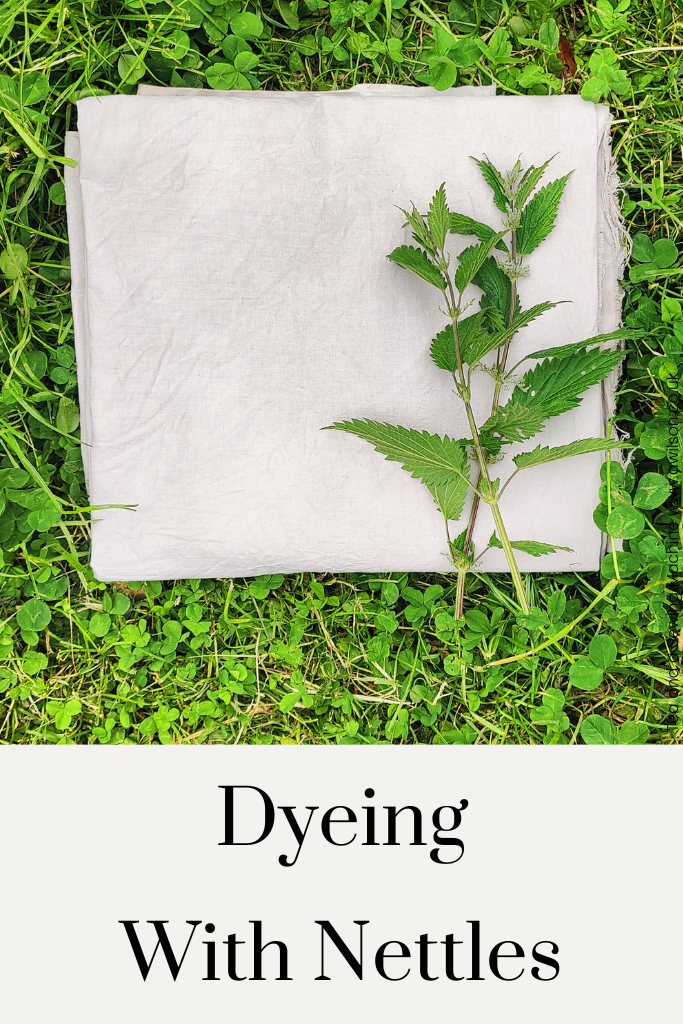
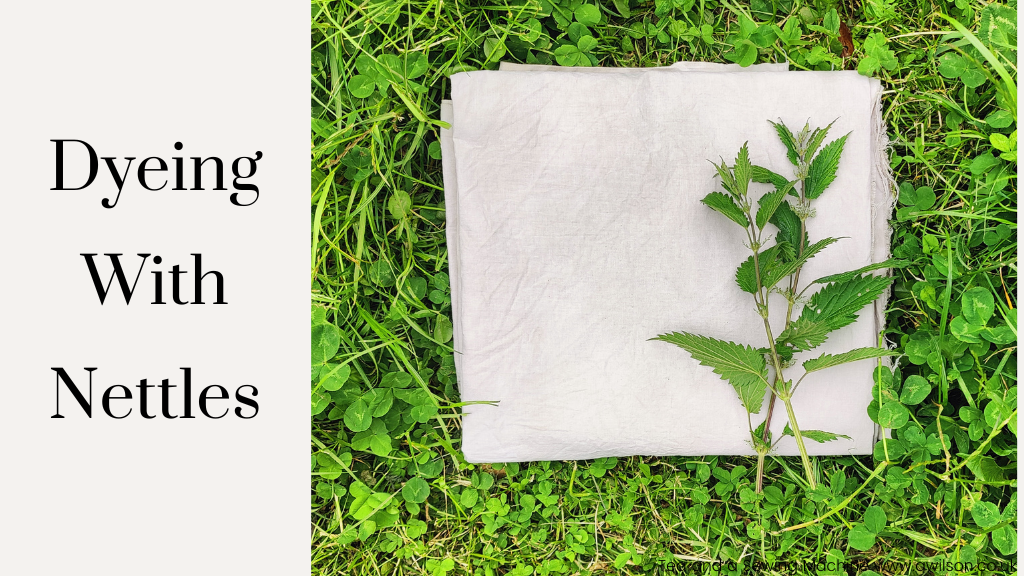


Good job Anna.This ideas are amazing!! Keep going .
Wow, what an inspiring journey you’ve shared here! Your exploration of using natural dyes from nettles and your commitment to avoiding toxic substances resonate deeply with your message about our connection with the landscape. It’s not just about creating something beautiful but doing so in harmony with nature.
What a great read Anna! I love the idea of using natural dyes from plants like nettles to create unique and eco-friendly textiles. Your passion for the landscape and wildlife shines through, and it’s inspiring to
I’m curious, have you tried combining nettles with other plant materials to create different colour variations? It could be a fun way to discover even more shades and patterns in your textile creations. Keep up the amazing work, and I can’t wait to see your future dyeing adventures!
Thanks, Mike
I haven’t actually, but that’s a good idea, thanks!